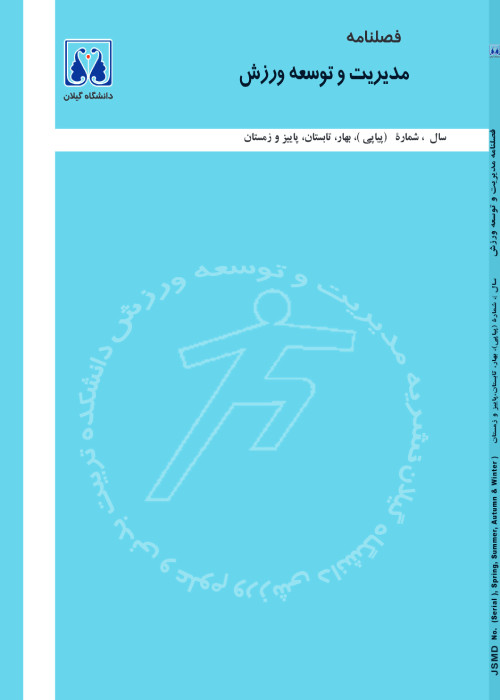Selecting the best model for ranking the participating countries in the Asian games by neural network model, tree model and k-nearest neighbor algorithm
Author(s):
Abstract:
Objective
This study was intended to predict the success of countries at the Asian Games through macro-economic, political, social and cultural variables.Methodology
We used the information of all variables including urban population, education expenditures, age structure, GDP real growth rate, GDP per capita, unemployment rate, population, inflation average, current account balance, life expectancy at birth and merchandise trade of all the participating countries in Asian Games from 1970 to 2006 in order to build the model. This model was then tested by the information of variables in 2010. The prediction was based on the total number of medals received by in each country. In this study, we used WEKA software that is a popular suite of machine learning software written in Java.Results
The value of correlation coefficient between the predicted and original ranks was 77.18% according to Tree model, 90.42% according to Neural Network model and 91.35% according to K-Nearest Neighbor Algorithm. Based on the analysis, K-Nearest Neighbor Algorithm had the highest correlation coefficient among the 3 models. This model, among 28 countries which won medals in Asian games, predicted the ranks of 23 countries with the maximum difference of 3 between predicted and original ranks, 3 countries with the maximum difference of 4 to 6 between predicted and original ranks and 2 countries with the maximum difference of more than 6 between predicted and original ranks. The previous studies have mostly focused on a small number of variables. The question is why the impact of macro level factors on sport success has been decreased. The results of this study indicated that the macro level variables still have a great impact on sport success and this reduction in impact proportion is due to the replacement of variables.Conclusion
This study aimed to use cultural and social variables besides political and economic variables, because in previous studies due to quantification problems, they were not included in the research design. The point is that many variables can simultaneously have economic, political, cultural and social weights, but their weights can be different in each of these ranges.Keywords:
Language:
Persian
Published:
Journal of Sport Management and Development, Volume:1 Issue: 1, 2012
Pages:
27 to 40
magiran.com/p1575185
دانلود و مطالعه متن این مقاله با یکی از روشهای زیر امکان پذیر است:
اشتراک شخصی
با عضویت و پرداخت آنلاین حق اشتراک یکساله به مبلغ 1,390,000ريال میتوانید 70 عنوان مطلب دانلود کنید!
اشتراک سازمانی
به کتابخانه دانشگاه یا محل کار خود پیشنهاد کنید تا اشتراک سازمانی این پایگاه را برای دسترسی نامحدود همه کاربران به متن مطالب تهیه نمایند!
توجه!
- حق عضویت دریافتی صرف حمایت از نشریات عضو و نگهداری، تکمیل و توسعه مگیران میشود.
- پرداخت حق اشتراک و دانلود مقالات اجازه بازنشر آن در سایر رسانههای چاپی و دیجیتال را به کاربر نمیدهد.
In order to view content subscription is required
Personal subscription
Subscribe magiran.com for 70 € euros via PayPal and download 70 articles during a year.
Organization subscription
Please contact us to subscribe your university or library for unlimited access!


